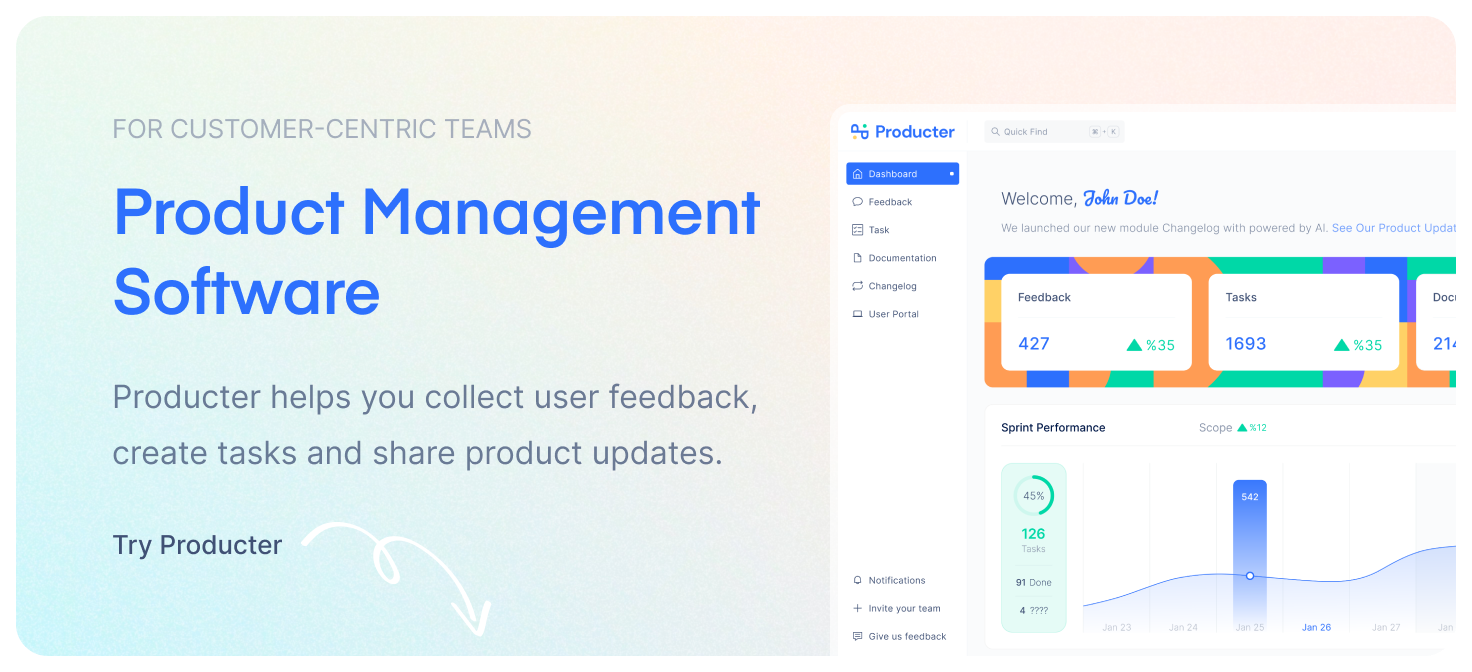The 5 key metrics every product-led growth company needs to monitor
Keeping track of your product analytics is vital in whatever stage of a product's lifecycle. You can see the big picture with the help of metrics and prevent emotionally biased decisions.
Also, it is important to choose the right metrics. Once you have selected these metrics, rank them in order of importance and analyze the most significant daily.
As a product-led company, you need to consider the following metrics when creating your dashboard.

Active Users
User activity metrics describe how much your product is used regularly over a specific period. It is also possible to use them as a ratio, like Daily Active User (DAU) / Monthly Active User (MAU).
Which you go with depends on how your product is structured. It can also vary from product to product, depending on the metric.
At Producter, we use Weekly Active Users, and we define activation as users logging in to their workspace multiple days per week.
- Set up automatic emails based on user behavior in the app,
- Highlight new features with tooltips,
- Cut out features that most users are not using,
- Increase the PQL rate
- Post changelogs regularly
Time to Value
The time it takes for the user to realize your main value or your aha moment.

Each day, hundreds of products enter our lives and we cannot comprehend their core values. Highlighting your product's key value is more important than ever.
Time to value is one of the most important metrics for Product-Led Growth companies. If it's a small company, you need to teach the user the product's value in free trial or freemium because you probably don't have a giant sales team.
Determine the specific action that will lead your users to discover your product's core value. It can be more than one. It is harder for the user to find the main value when there are many core actions.
Lastly, measure the time from successfully registering to take that action.
For a new product, not being able to lower TTV, in the long run, may indicate that you are in the wrong market.
- Personalized onboarding,
- Onboarding gamification,
- In-App Tutorial.
Free-to-Paid Conversion Rate
Having acquired good users will give you plenty of opportunities to test your product. Customers who like your product will keep using it. It is still a costly process to develop the product, and the expense continues. As a result, you need to convert free users to paid customers somehow.

In Product-Led Growth, this metric shows you which users find enough value in your product to pay for it.
- Better Pricing Strategy that suitable for the product,
- Creating the right expectations in users while on the website,
- Using Chatbot Tools to convert,
- Trigger Activity-Based Alerts.
Feature Adoption Rate (FAR)
The feature adoption rate indicates how many users have adapted to use a feature.

Users are the top priority for most Product-Led Growth companies. After it is developed, we have to monitor whether users are actually using the features. We should build the features they need to build a product that users will love and pay for.
Even more important than that, and the point most companies miss is cutting the features that don't use by users whatever you do. Don't cut off new features if no one uses them immediately. Focus on improving them. However, if nothing works, removing them will benefit your product more.
- Tooltips for new features,
- Sharing public changelogs,
- Chatbot Messaging,
- Informative Emails
Product Qualified Leads (PQLs)
In contrast to marketing and sales leads, PQLs are leads that are more likely to buy the product. The definition of PQLs depends on the product-to-product, like activation metrics. You need to determine what types of users are more likely to purchase your product in order to define it. After that, find those users who are that type but didn't buy the product yet. After that, spend your attention on those users.
In Product-Led Growth companies, PQLs are more important than in other companies. This is because you need to learn how to sell the product since you don't have sales teams. And you ought to focus on people who are actually interested in the product.
- Creating content for people who are likely to use your product,
- Decreasing Time to Value,
- Better customer support.
Conclusion
In addition to choosing metrics, tracking and organizing them are also key. For consistent results, it is imperative to select metrics that are traceable and easy to understand. Analytic dashboards should not include too many metrics.
Finally, but probably most importantly, improving these metrics takes time and effort. Regular testing is the only way to improve these metrics.
Producter is a product management tool designed to become customer-driven.
It helps you collect feedback, manage tasks, sharing product updates, creating product docs, and tracking roadmap.






